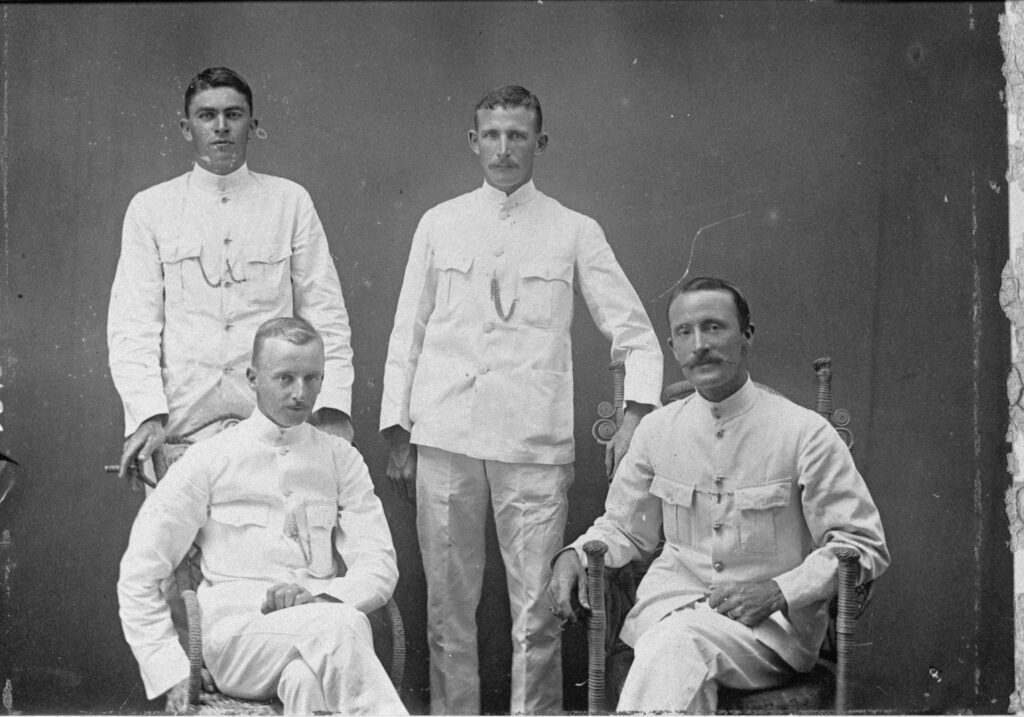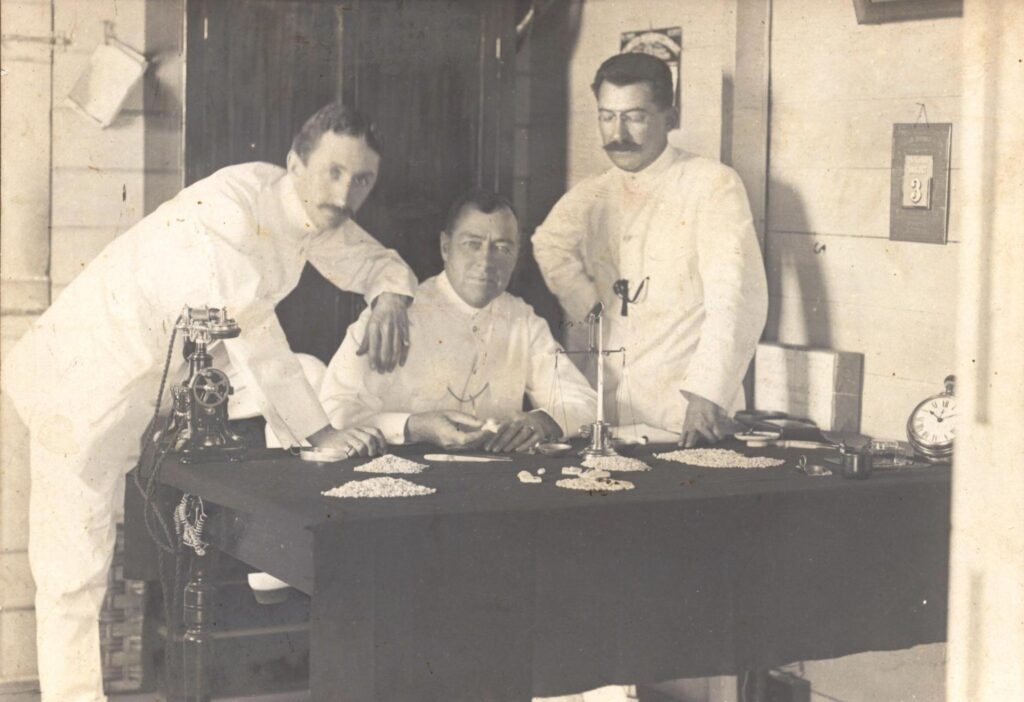Tropical whites in early twentieth-century Darwin and Broome
Among many striking early twentieth-century photographs of men wearing white suits in far north-western Australia, the one below seizes attention. Four men of European descent soon to leave for a First World War battlefront appear in this photograph taken in the pearling port-town of Broome in c.1914, each dressed in impeccable white cotton drill suits.

The photograph is compelling because of how little its subjects reflect the knockabout-soldier stereotype associated with the Australian and New Zealand Army Corps. Instead of dishevelled khakis, each of the men wears a radiantly white patrol jacket buttoned all the way to the neck. Both the man standing on the left and other seated on the left exude an air of self-satisfied hauteur. One of the men has a starched stand-up collar. The other three wear detachable band collars fixed with pearl or pearlshell studs in a nod to the industry on which the Broome economy then relied.
Lorinda Cramer and I have written an article soon to appear in the journal Gender & History about white menswear worn in northwestern Australia early in the 1900s. The article explores the labour that went into making and laundering the masculine fashion for white suits in northwestern Australia – a fashion also found in tropical European colonies such as the Netherlands Indies, the British Straits Settlements and British India.
The article also explores who did this labour. In Broome and Darwin, most of the work was by men of Chinese (although some of Japanese) descent working extraordinarily long hours for tiny pay. There were also men from northwestern Australia’s First Nations who carted water and chopped the wood for the laundry coppers. They were paid only with rations and an allowance for lollies, cigarettes and perhaps a weekly trip to the local segregated cinema.
Back in the days before the new Australian government’s racist Immigration Restriction Act (1901) prevented wealthy families from importing Asian men to work for them as ‘houseboys’ in tropical Australia, the pearl buyer Ted Hunter (depicted seated in the middle of another striking photograph below) was said to have brought a Malay servant with him to Broome. One of the responsibilities of this servant was to blanco multiple pairs of white shoes for Hunter night so that he could change his footwear whenever it became smeared with red dirt over the course of the day.

The high-maintenance mode of fashion represented by tropical white suits scarcely fits into understandings of historical Australian masculinities or menswear. The latter are more often represented by wiry or burly figures in slapdash attire. The fashion for tropical whites thus points to the distinctive nature of northern Australia in the period: to its particular set of unequal labour, social, racial and colonial relations, and to the masculinity most encouraged and elevated there, invested in a certain kind of radiantly conspicuous consumption and air of easy hauteur.
Since the historical fashion for tropical whites seems exotic today, it also helps to reveal the way that dominant modes of dress also speak volumes about a society – not to mention how clothes help to make the man.
………
Melissa Bellanta and Lorinda Cramer, “Tropical Whites: Hegemonic Masculinity and Menswear at the Crossroads of Australia and Asia, 1900–1939”, Gender & History (forthcoming online 2022).
